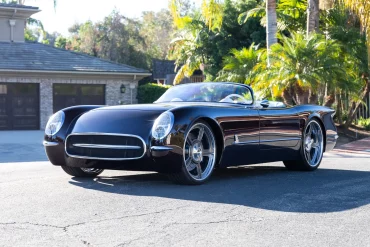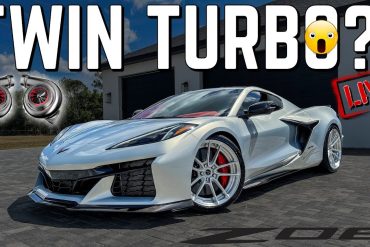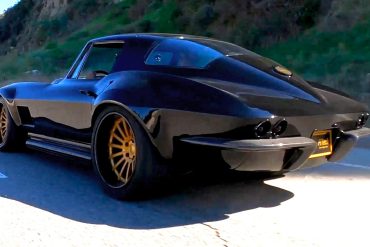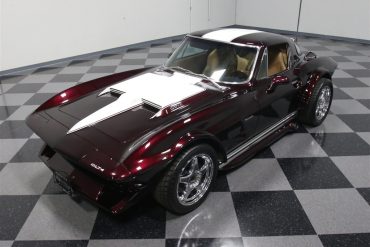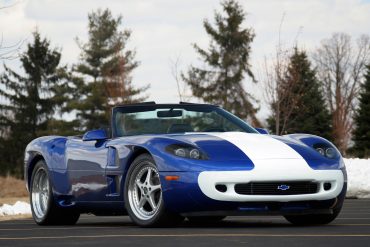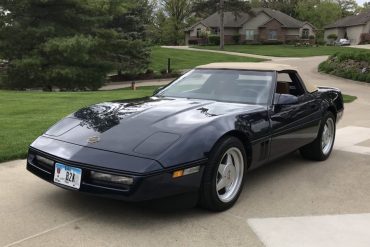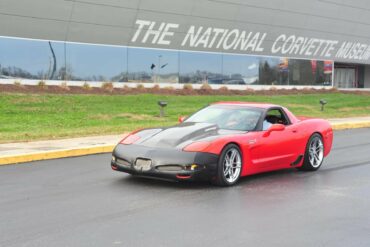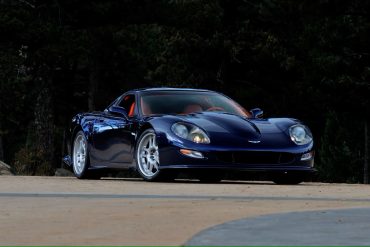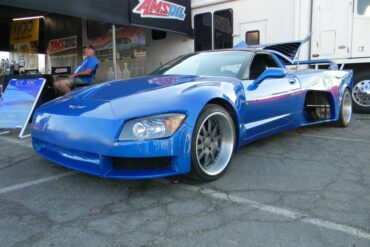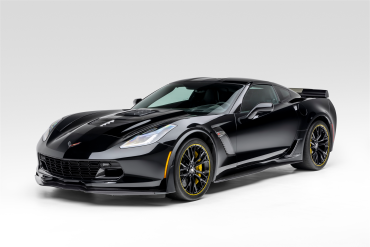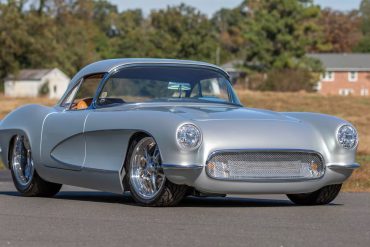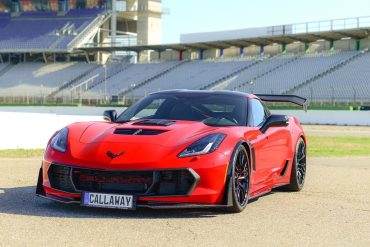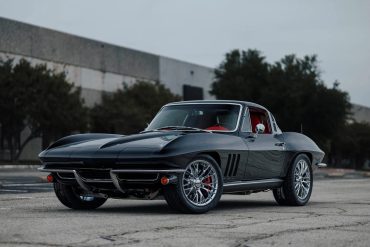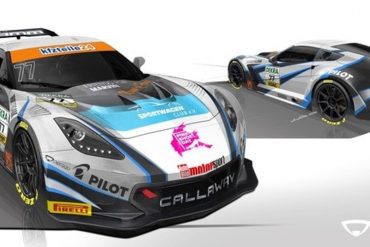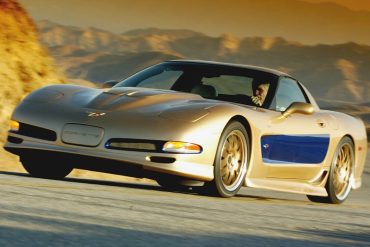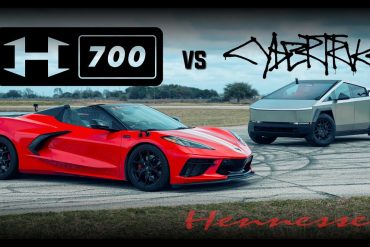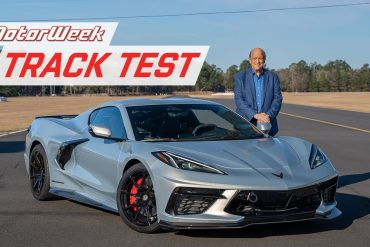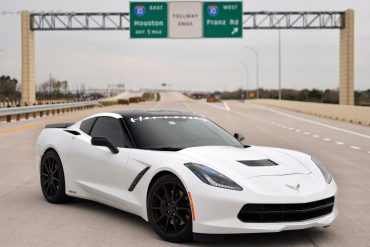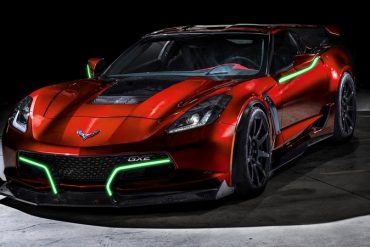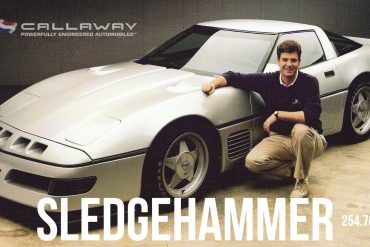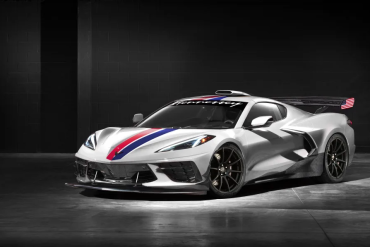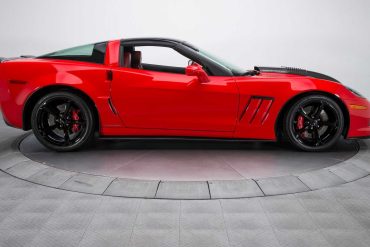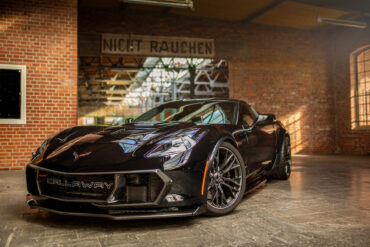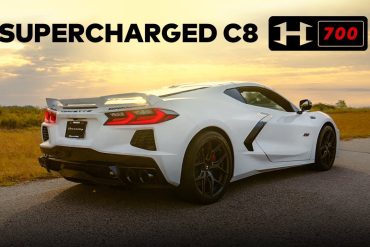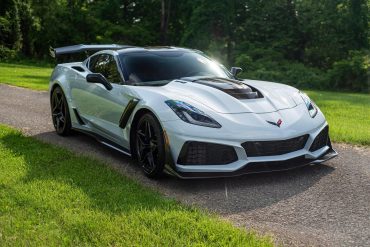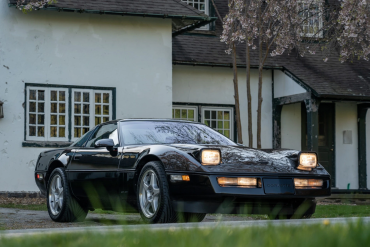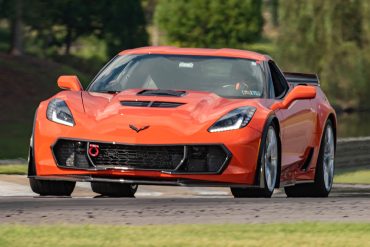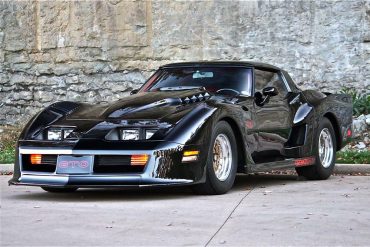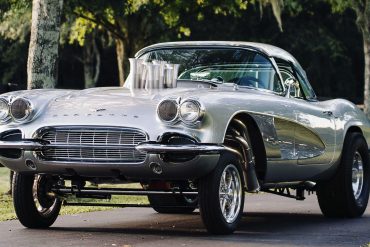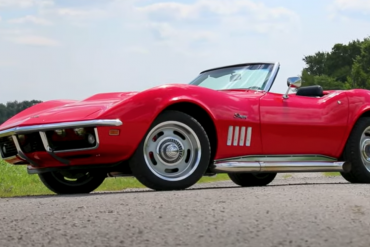If the name sounds familiar, you may have run across Dave Kindig on the reality TV show Bitchin’ Rides, where...
The excitement surrounding the upcoming 2025 ZR1 never ends, and as the 7.25.2024 reveal date looms, one Texas tuner has...
Corvette enthusiasts will always have a deep-rooted affection for the C2, and this particular car, crafted by Nostalgia Hot Rods,...
1966 Corvette Resto-Mod – More Than Meets the Eye! So you’re looking for a classic Corvette with the performance and...
To understand why the Guldstrand GS-90 coupe and convertible differ so much, keep in mind that during the course of the C4 development cycle, no ZR-1 convertibles were planned, so the base C4 convertible had to be used in building a GS-90 Nassau Roadster, as it was called. The coupe, however, had the advantage of using the ZR-1 platform right from the get-go.
FOR SALE: A 1988 Callaway Twin-Turbo Corvette Convertible We are pleased to present this 1988 Corvette Convertible. Our friends at...
Mallett Performance Has Created Some Truly Remarkable Corvettes (and other vehicles too!) If you are familiar with Corvettes, then it...
When Chevrolet introduced the fifth-generation Corvette in 1997, Callaway immediately began development of a platform that would compliment and enhance the all-new C5 model. Reeves Callaway,...
This Corvette Powered, Twin-Engine GT-55C Super Super Car Is Something to Behold Have you ever heard of Gordon Tronson? If...
The C7.R Edition Z06 Corvette was specifically designed as a direct tribute to the Corvette Racing C7.R race cars. The...
This custom 1962 Chevrolet Corvette was built by American Street Rods in Gainesville, Virginia and represents an exceptional custom build...
Callaway Competition has constructed some of the most successful GT3 race cars in history. Competing against the world’s premier marques, Callaway is currently recognized as the most successful race team of the ADAC GT Masters series. To celebrate Callaway Competition’s 25th anniversary, we’re building 25 unique, specially-equipped “Callaway Champion” road cars. The Z06-based Champions are built by our expert craftsmen.
This 1965 Chevrolet Corvette restomod is built on an Art Morrison chassis and is propelled by a 6.0-liter LS2 V8,...
A New Look for the Car’s 13th Year Callaway Competition will run its Corvette C7 GT3-R in this year’s ADAC GT...
In 2003 Dick produced his version of a 50th Anniversary Corvette. Dick’s 50th Anniversary Corvette was bright gold with blue accents. And of course a “special” Corvette should be the toughest available version, which in 2003 was the Z06. And to top it all off, the Z06’s LS6 was opened up to the magical “426 CID.” The GS80 came out in 1986 that was more or less a Showroom Stock-prepared black beauty with very trendy lace wheels.
When the mid-engine eighth-generation Corvette hit the scene in 2020, it satisfied the speed cravings of most enthusiasts. Now, four...
MotorWeek takes a look at the 2022 B2K 35th Anniversary Edition Callaway Corvette as they push it to the limits...
Not many cars back in 2014 could boast a 200-plus-mph run on their resumes, but thanks to Hennessey Performance, the...
Genovation’s Street Legal 800HP GXE Electric Corvette Arrives at the LA Auto Show In December, 2017, Corvsport.com published an article...
Based on a 1988 Chevrolet Corvette, the Sledgehammer was designed and manufactured by Corvette aficionado and legend Reeves Callaway. The Sledgehammer’s...
No surprise that the C8 Corvette caught the team’s attention at Hennessey. It is, after all, one of the greatest...
The 2005-2013 Callaway Corvette was a specialist version of the C6 Corvette, built by Callaway Cars expert craftsmen and sold through selected Callaway/Chevrolet dealers. The 17th “C-Project” undertaken by Callaway first produced naturally-aspirated SuperNatural™ 450, 461, 490 (6.0L) and 550 (6.8L & 7.0L) horsepower Callaway Corvettes. In February 2006, Callaway returned to its positive manifold pressure roots, introducing Callaway “SuperCharged” Corvettes.
When it comes to modifying a Corvette, there are a few things to think about before even thinking about going...
If you can’t get your hands on a 2023 Chevrolet C8 Corvette Z06, Hennessey Performance offers an alternative: the H700....
Following its unveiling at the 1953 General Motors Autorama, the Corvette brand has transformed into a renowned brand with one...
When it was released, the ZR-1 was a costly option that would transform conventional Corvettes into a sports car that...
For the 2014 model year, the Chevrolet team sculpted the seventh-generation Corvette into the most sophisticated, most feature-packed Corvette produced to date. Facing a daunting challenge, new technology enabled Callaway engineers to produce breathtaking power with seamless transition into and out of positive manifold pressure. Entirely new, Callaway’s patented GenThree supercharger design improved airflow quality and increased charge air cooling capacity.
The major differences between the 1980 and 1982 Daytona and the 1981 GTO are the hood, the tops of the rear fenders, and the rear spoiler/bumper cover. The Daytona had an elaborate, short vertical fin on top of the rear fender that turned several turns “in and back,” flowing to the wide, long, table-like rear spoiler. The GTO’s rear fenders pontoons are the same as.
This 1961 Chevrolet Corvette Gasser Resto Mod is based on a custom frame made by Nickey Chicago’s technical advisor, John...
Chevrolet C3 Corvette LS3 V8 Swap The V8 Speed & Resto Shop team is known for classic and muscle car...


